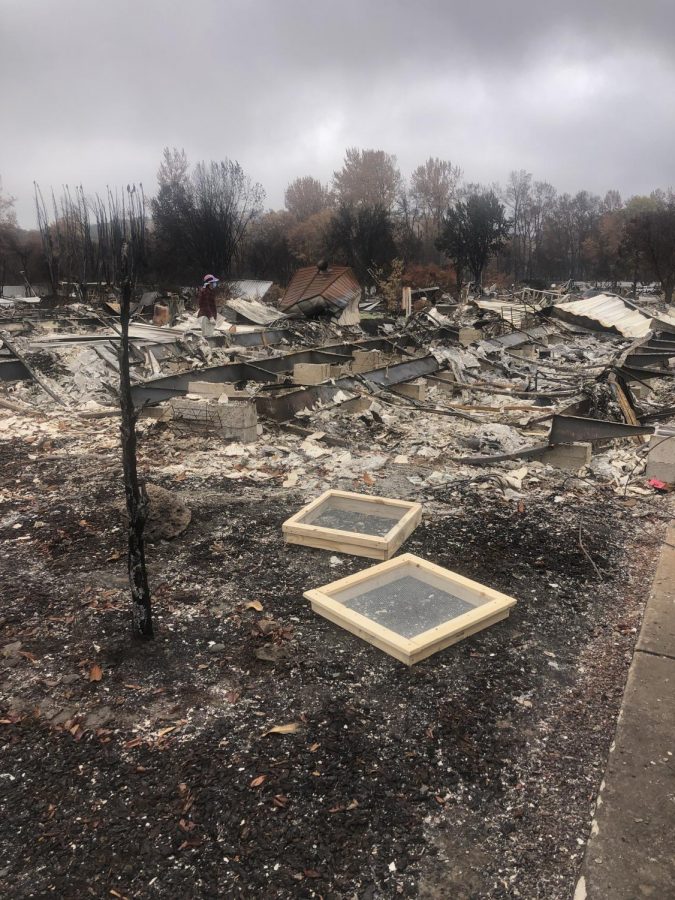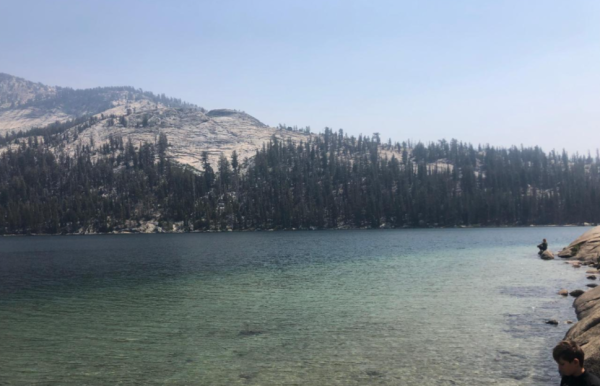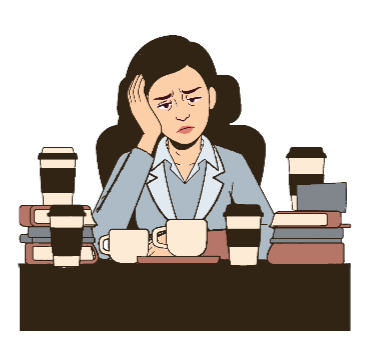Wildfires Rampage Along The West Coast
Families flee as smoke from wildfires reaches Europe
WILDFIRES. This summer, many states in the West coast suffered a disastrous season of wildfires resulting in dozens of deaths and the destruction of over 5 million acres of land. The fires caused concern over air quality as plumes of smoke have travelled all across the country. “Not only was the air quality poor, but the sky maintained a dismal orange tone that blocked out the sun.” “It looked like a scene from the Martian,” explained Morgan Taylor-Cohen, a high school student from the Bay Area, adding that “at 3 pm it felt like 3 am.”
By now, you have probably seen plenty of jarring images of the blood-red skies over the Western region of the United States this summer. Western states, primarily California, Oregon, and Washington, have been battling ravenous fires since the beginning of September, caused by extremely hot temperatures and dry conditions. To date, the historic wildfire season has caused the destruction of over five million acres of land, tens of thousands of people have been forced to evacuate their homes, and at least 35 have been killed.
For residents of these states, going about daily life with fires on the horizon and burning red skies is grim. Those in the path of fires have been forced to flee at a moment’s notice. In Oregon alone, tens of thousands of residents are under an evacuation order. According to Morgan Taylor-Cohen, a high school student from the Bay Area, “not only was the air quality poor, but the sky maintained a dismal orange tone that blocked out the sun. It looked like a scene from the Martian,” said Taylor-Cohen, adding that “at 3 pm it felt like 3 am.” For those not battling the fires, the cloud of toxic fog stretching over the region provides no relief. “We are advised not to go outside with the unhealthy level air quality, and my family and others were encouraged to pack a few belongings just in case there was a sudden evacuation,” explained Taylor-Cohen.
And that same smoke and dust which turned the West Coast’s skies a blaring red hue for days spread across the country, leaving even New York City with hazy skies. The smoke even reached Northern Europe, proving that the “scale and magnitude of these fires are at a level much higher than in any of the 18 years that our monitoring data covers” according to Copernicus Atmosphere Monitoring Service (CAMS).
These severe smoke and dust levels have impaired air quality in the region, raising alarms for many at-risk residents. One study by the University of British Columbia, co-authored by Dr. Jiayun Angela Yao, an environmental health researcher, showed that within an hour of fire smoke descending upon the Vancouver area during recent wildfire seasons, the number of ambulance calls for asthma, chronic lung disease, and cardiac events increased by 10%.
So what exactly is the cause of this abnormally destructive wildfire season? From climate change to forest management, there’s plenty of blame to go around, but it is clear that multiple natural factors are at play. According to Daniel Swain, a climate scientist at UCLA and the National Center for Atmospheric Research, the primary driver of the fires is California’s rising air temperatures.
Over the past century, climate change has raised California’s air temperature by 3 degrees Fahrenheit, making 2020 one of the driest and hottest years on record. These conditions combined with a freak lightning storm and windstorm to create what Swain refers to as the “perfect firestorm” of elements, which is exactly why “what we’re seeing right now is that every fire is becoming a super-intense fire,” he told the Atlantic.
Zoey Belyea, a resident of Ashland, Oregon who witnessed the fires explained that “Hundreds of families have lost their homes, they are just burned down to the ground, all you see left is the burned-out skeletons of cars or chimneys standing in the middle of the rubble. A lot of businesses also burned down, especially the businesses along the main highway, things like churches, motels, industrial services, gemstone shops, bookstores, restaurants.” But, she adds that the community support has been overwhelming. “Immediately following the first day of burning, there were multiple donation collection sites all around the valley for food, clothing, household items, everything you could imagine…There is a group of volunteers going around to help people sift through the ashes of their homes to try to find special items…friends staying with friends and neighbors. It’s been really encouraging to know how committed people are here to helping each other” Belyea said.
The solution, Belyea explains, is to acknowledge the impact of climate change, invest in reversing its effects to prevent future destruction, and return land management to the traditional stewards of the land, it’s Native American populations.












